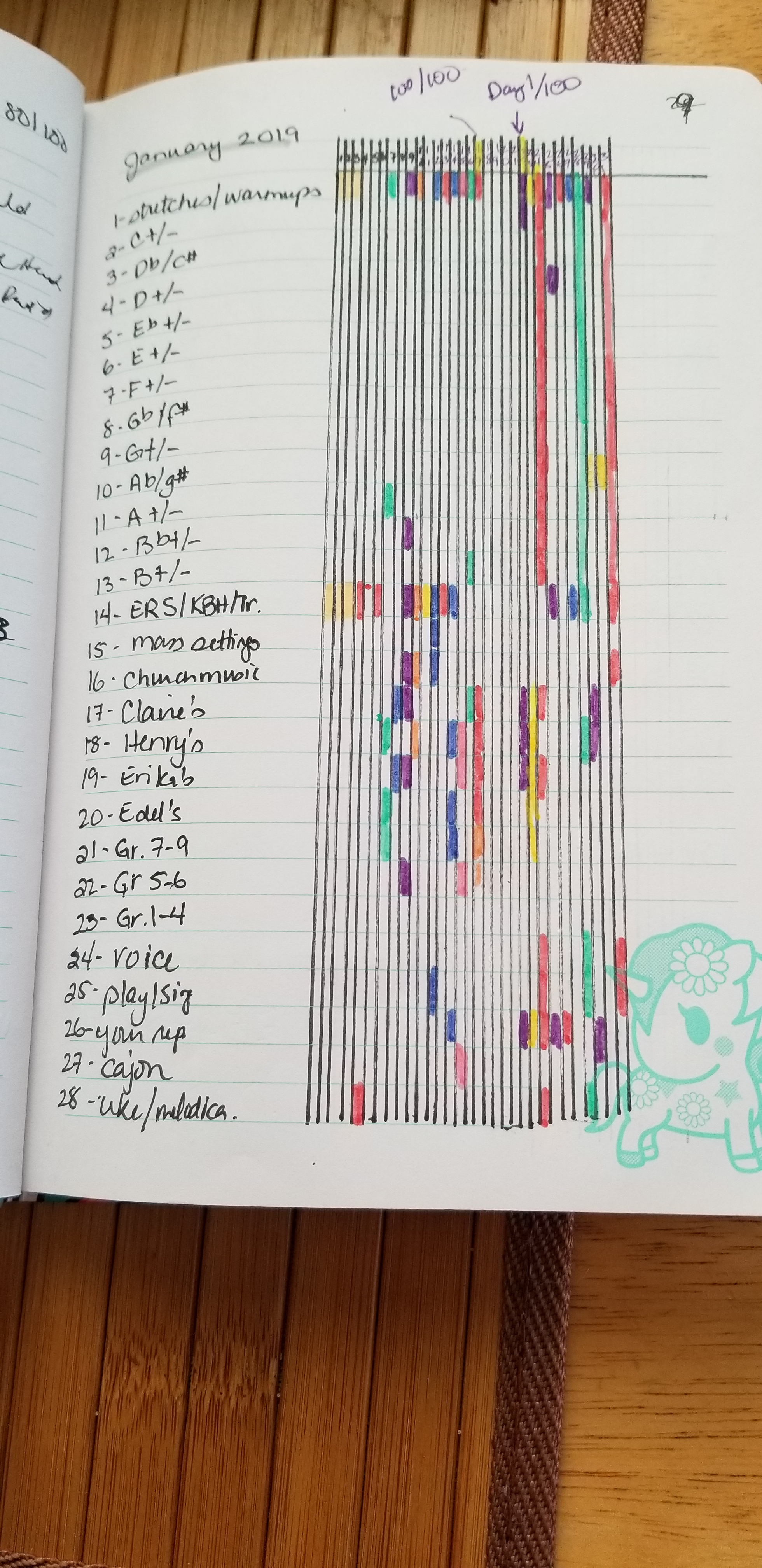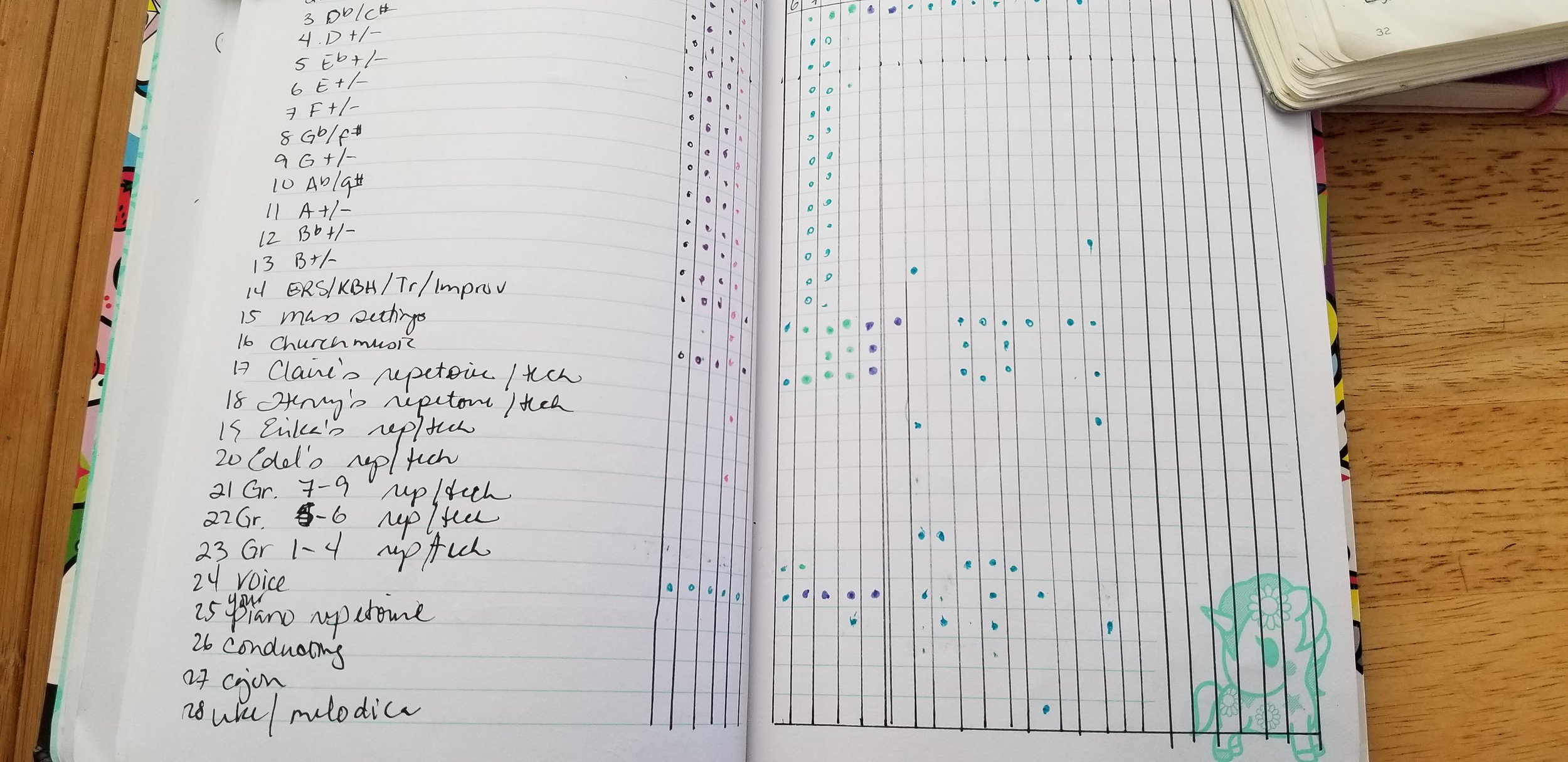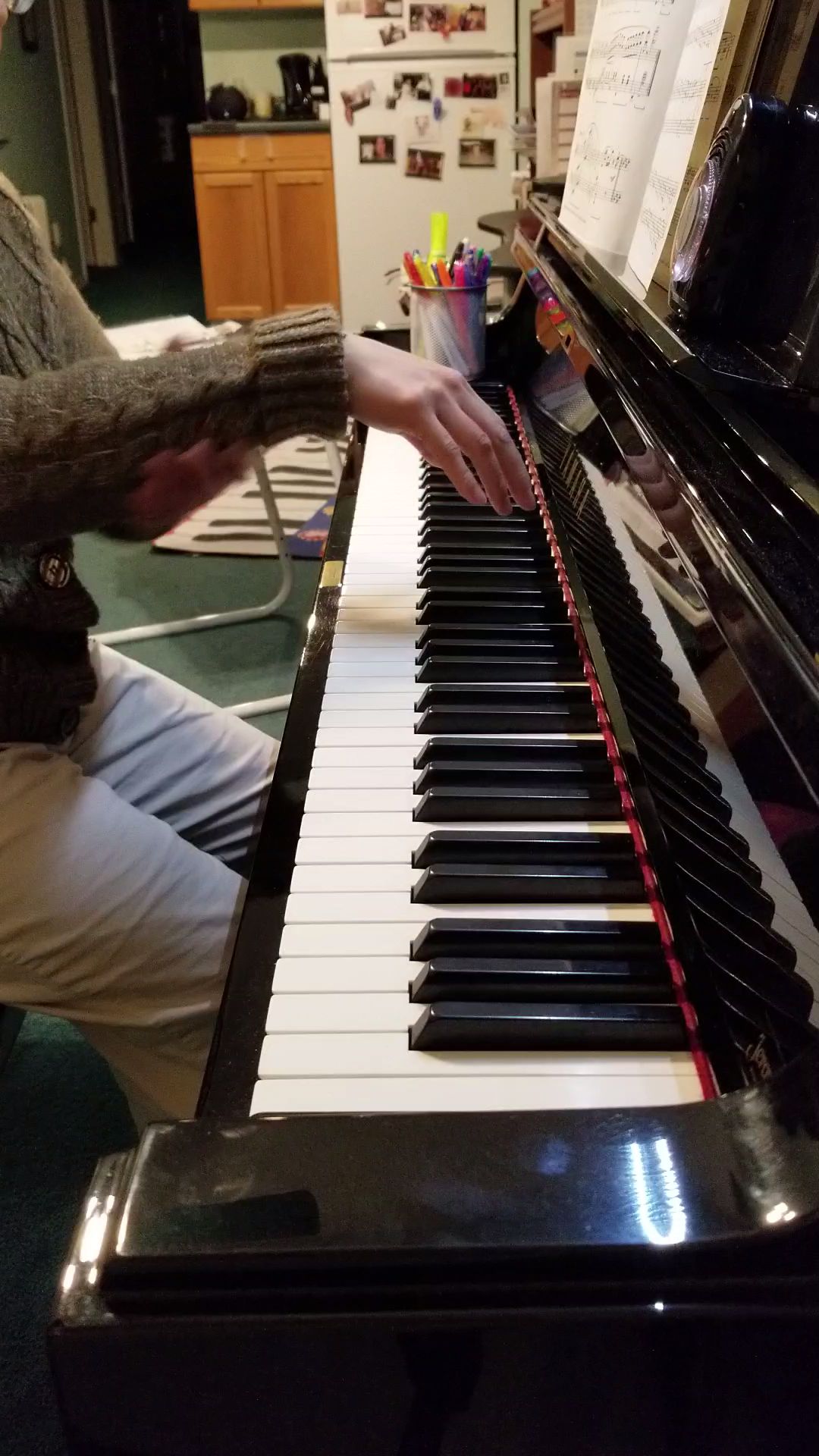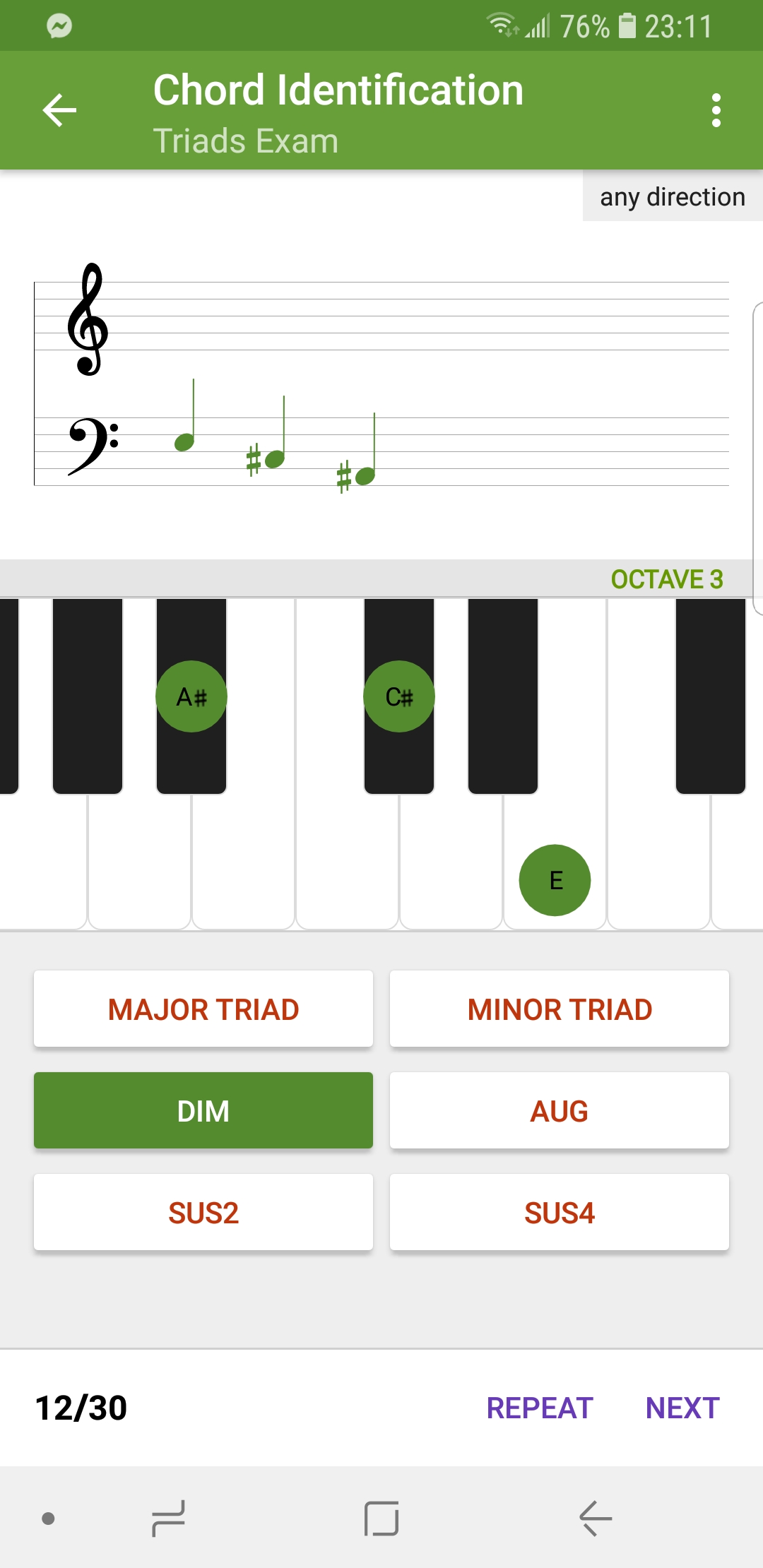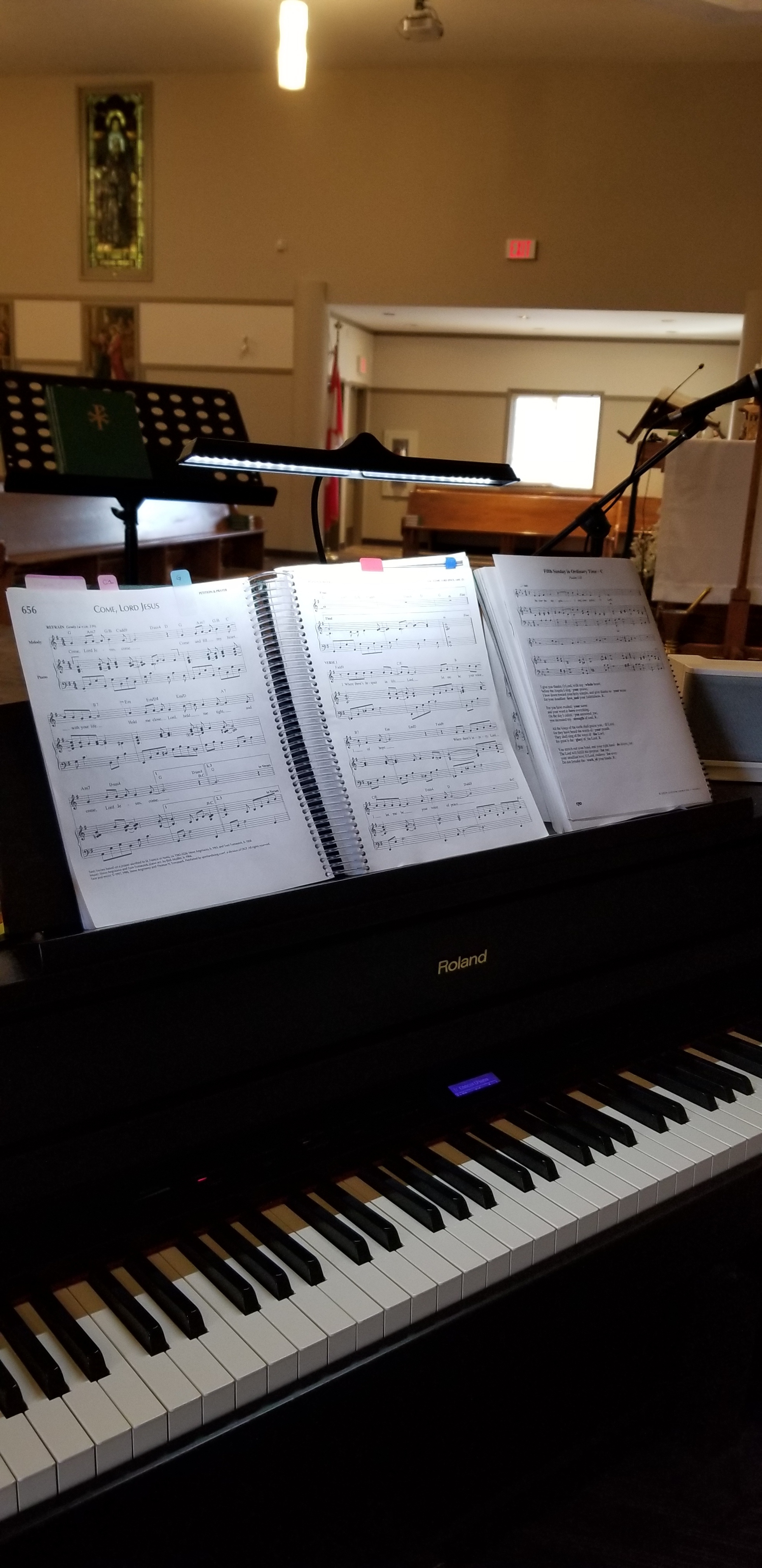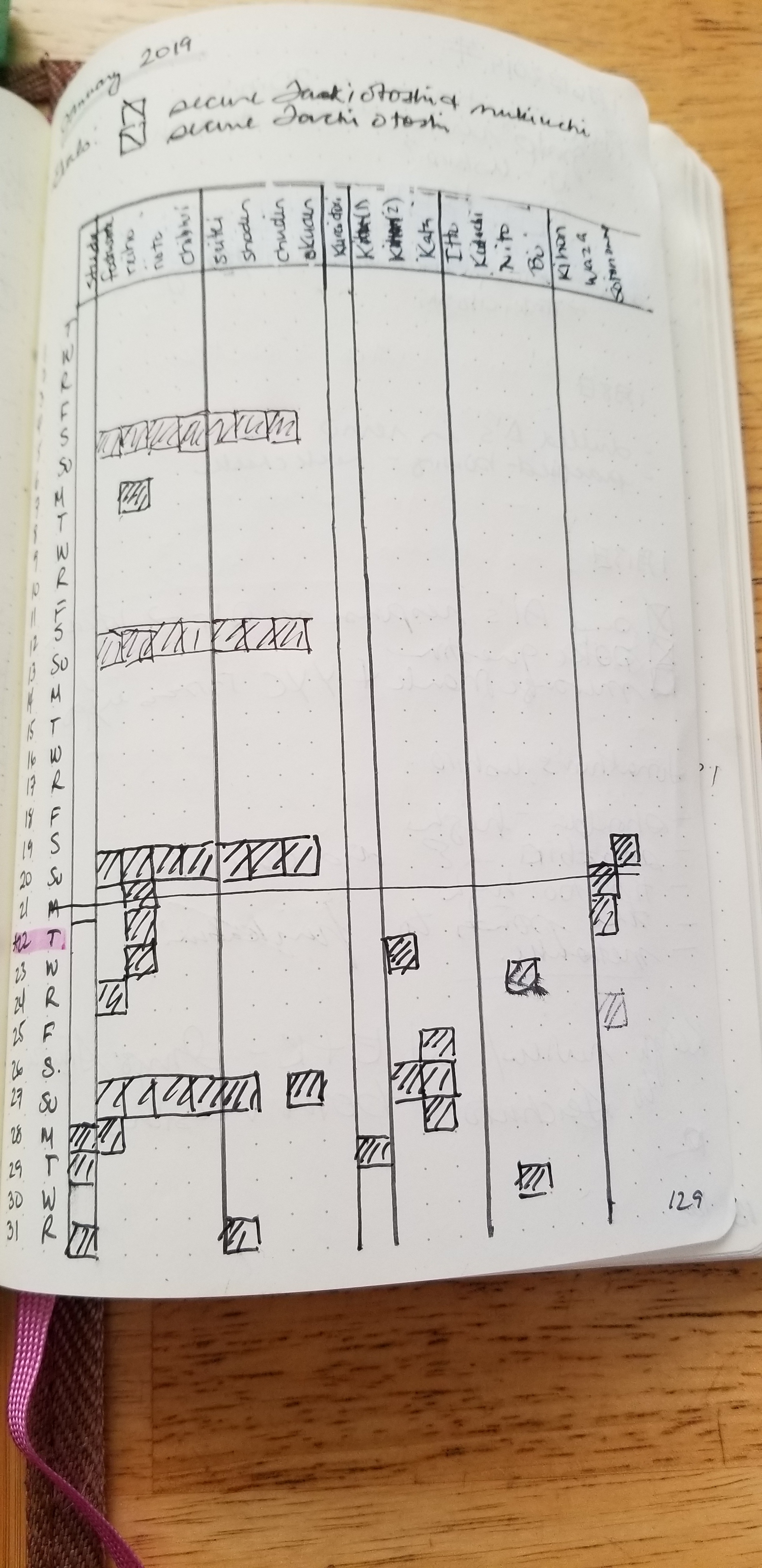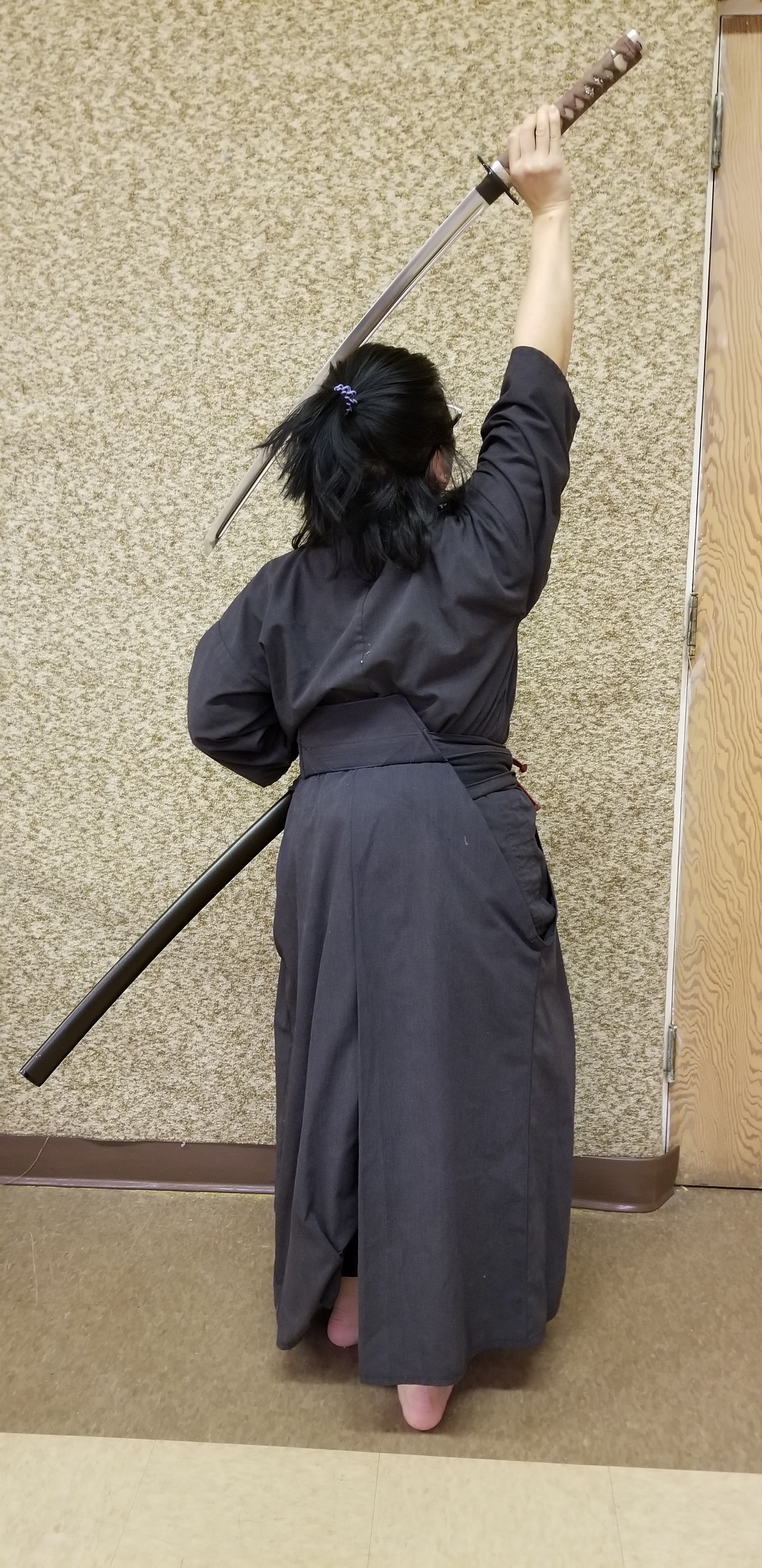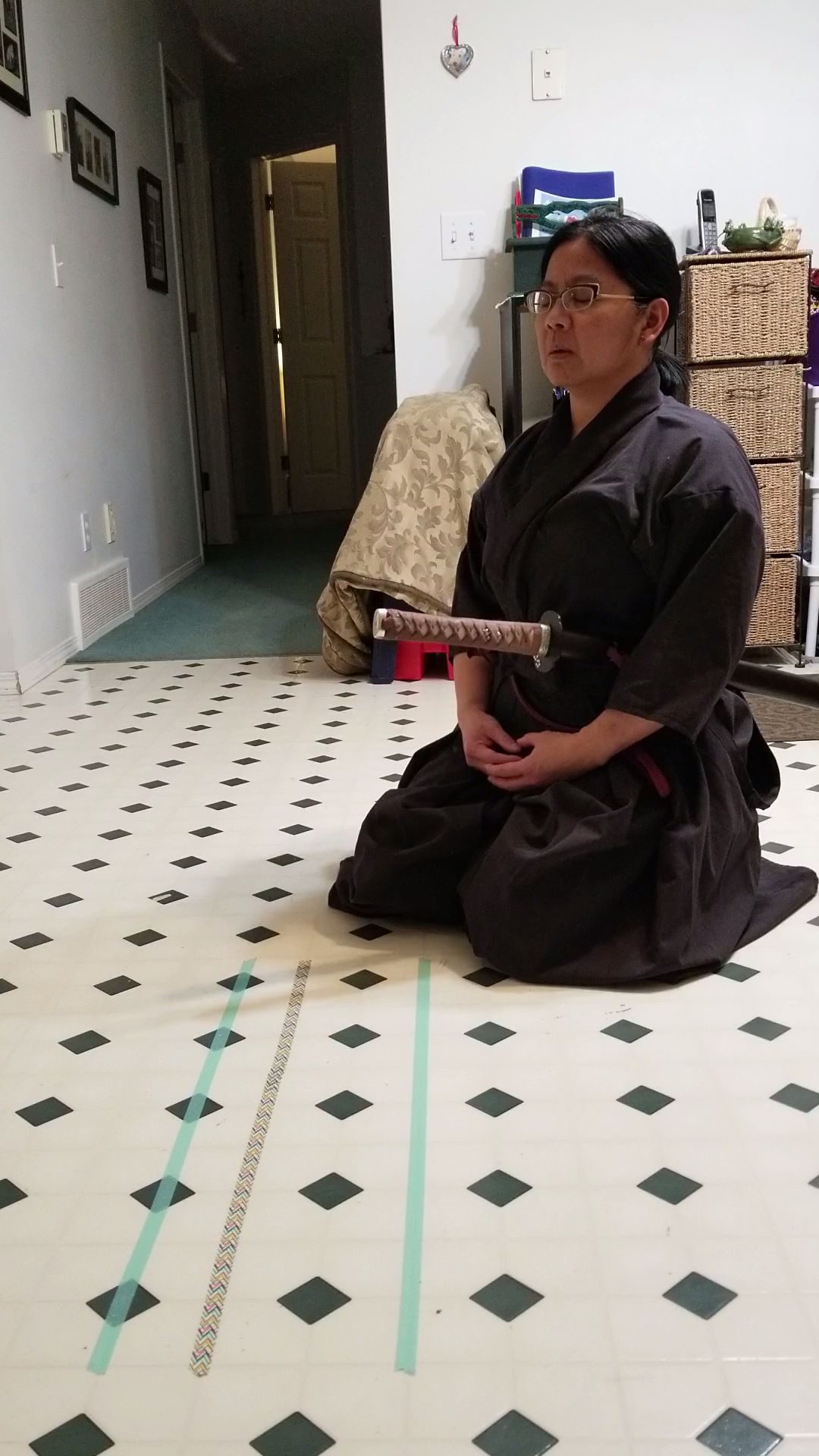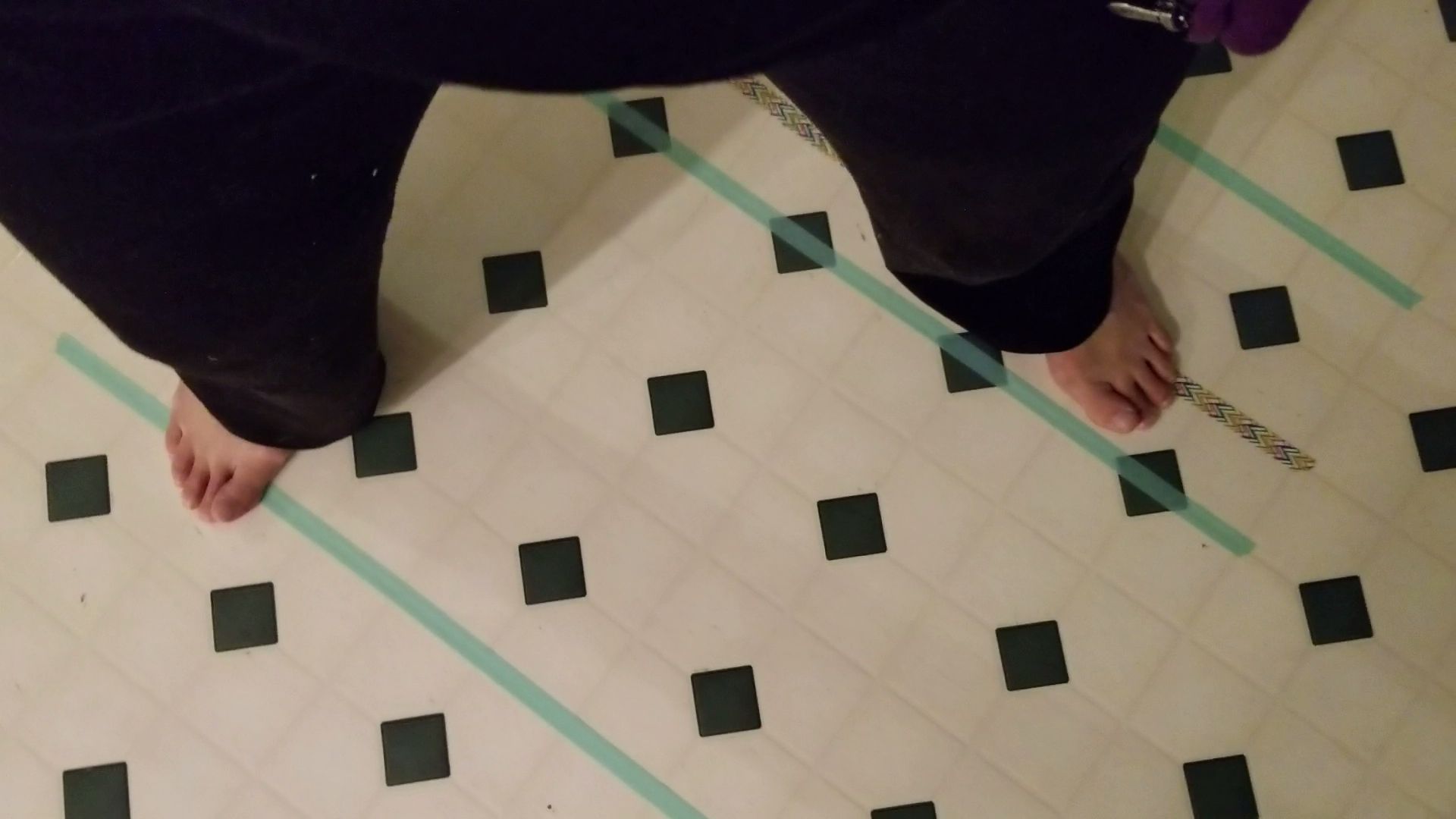According to my practice trackers, I completed Day 30 of my 100 Days of Practice Challenge on Wednesday. As I mentioned a few posts ago, I decided to do a 100 Day Music Practice Challenge as well as a 100 Days of Budo Practice Challenge simultaneously. It has been an interesting journey so far.
100 Day Music Practice Challenge (Round 2) So Far
Very early on, I hit a couple of snags in my music practice challenge that affected working on my featured trio of pieces: Danza del gaucho matrero (Ginastera), Papillons (Schumann), and Somewhere Over the Rainbow (Iz’s version). The first piece to hit a roadblock was Somewhere Over the Rainbow. I truly love this song. Sadly, I would need to capo my ukulele down seven frets to transpose it into a key that works for my voice. That just doesn’t give me much to work with fret-wise.
Rather than futz around with trying to make it work, I decided to work on Happy Together (The Turtles) as my non-dominant instruments project. I can comfortably sing it in the original key. Besides, I will have an easier time coming up with a cajón groove for Happy Together.
Schumann’s Papillons presented me with two challenges. It didn’t take long for me to realize that although I like listening to this work occasionally, I don’t really click with it. I don’t feel any emotional connection to it. However, since my late piano teacher Mrs. Ginzburg bequeathed this work to me, I want to unlock whatever lessons she wanted me to take from it.
The second challenge is potentially dangerous from a musician health perspective. Those who have been following the 100 days of practice challenge on the Studio’s Instagram can plainly see that I have small hands. Not much I can do about that.
Papillons is chock full of blocked octaves at a fast tempo. From Day 1, I recognized that another round of Tennis Elbow and Golfer’s Elbow may lie in my near future. I’ve had those repetitive strain injuries enough from from playing ragtime and other works with blocked chords and octaves to know that this is going to be a huge problem. By my fourth practice working on Papillons (Day 25 of the challenge), sure enough, the first signs of Golfer’s Elbow were making themselves known. I was seriously contemplating dropping it.
After discussing the situation with my brother (fellow pianist and music teacher), I decided to stick with it. Perhaps the lesson Mrs. Ginzburg wanted me to learn is how to play such pieces injury-free. So, I’ve taken everything back to square one and am breaking everything down into very small chunks, constantly assessing and adjusting until I have released all tension in my hands and arms before moving on to the following notes. This is going to be an arduous journey.
Featured piece #3, Danza del gaucho matrero, has been a fun ride so far. It’s so much easier to relearn old repertoire. It’s like reconnecting with an old friend. Sure, we fought a lot at the beginning but now, it’s just pure fun. Crazy, discordant fun, but fun nonetheless.
One observation I have noticed is that balancing my work on these three pieces, while juggling work on choir repertoire and my advanced students’ repertoire is hard. I’ve fallen behind on my student repertoire recording project. I haven’t spit out a technical requirements video in a while either. I think I will need to start budgeting how much time I spend on each area in my practice plan and set a timer.
I’m already getting ideas for future challenges, after checking out what others are doing in their 100 days of practice challenge on Instagram. Although I don't think I’ll ever do a #100daysofBach challenge, I think 100 Days of Sight-Reading, 100 Days of Baroque (OR Classical OR Romantic OR Impressionistic OR Contemporary Classical OR jazz) would be exciting adventures.
100 Days of Budo Practice Challenge So Far
“Budo” is the Japanese term for “the way of martial arts” or “the way of war.” For those just joining in, in addition to teaching piano and playing a bunch of musical instruments, I practice four non-mainstream Japanese martial arts at Ka Muso Kai (a dojo affiliated with the Canadian Kendo Federation, which, in turn is affiliated with the All Japan Kendo Federation): Iaido, Jodo, Hyoho Niten Ichi Ryu, and Choken Battojutsu Kagéryu. Last summer, I earned my Nidan (second degree black belt) in both Iaido and Jodo. The grading was the culmination of a vigorous weekend-long seminar and the gradings ran back-to-back. “Intense” doesn’t begin to describe that experience.
Iaido is the art of drawing the sword. It translates to "the way of harmonizing one's self in action at all times and in all conditions." Jodo is the art of the short staff. It was founded by Musô Gonnosuke Katsukichi, the only person known to have defeated Miyamoto Musashi in a duel. The Japanese police use a variant of Jodo to this day. Hyoho Niten Ichi Ryu is Miyamoto Musashi's two-sword art ("Two Heavens as One"). Choken Battojutsu Kagéryu is one of the few surviving Japanese long-sword arts. The founder was Yamamoto Hisaya Masakatsu, a retainer of the famous Tachibana clan.
Prior to the challenge, I tried to train two to three times a week (dojo and at home). Some weeks were better than others. It was much easier when I trained at the dojo twice a week. Due to my teaching schedule, I can now only train at the dojo once a week, so I felt I needed to do something to not let things erode. Plus, with over 120 techniques floating in my head, I knew I needed to practice more secure them more firmly into memory. Enter the 100 Day martial arts practice challenge.
I must admit, adding a second 100 day practice challenge has made my days a bit more complicated. This is, by far, the longest uninterrupted stretch I have practiced budo for. There were days when my plans to squeeze in a 20 - 30 minute training session got derailed, becoming a 5 - 10 minute study session.
Recording my training sessions has been highly educational. “Camera Sensei” has pointed out problems that I thought I had already fixed, from dropped sword tips to stride lengths that are too short to be stable, and from kinked wrists to sloppy footwork. With Camera Sensei’s help, I have worked through some of those trouble spots.
Initially, I started jotting down a study/training plan for the next day in my Budo Notebook. I noticed a definite increase in my budo study sessions when I did not write out a plan. I better go back to writing a plan so I can budget my time better on designated “at home” training days.
It’s been neat to see the steady progress being made musically and budo-wise. However, this 100 Days of Practice Challenge does reveal that there is always room for improvement. Well, whether music or budo, the journey is more important than the destination.
To find out more about my 100 Days of Practice Challenge Rules, check out my Reflecting on My First 100 Days of Practice Challenge post.
To follow my 100 Days of Practice Challenge, head over to Musespeak Studio’s Instagram:


